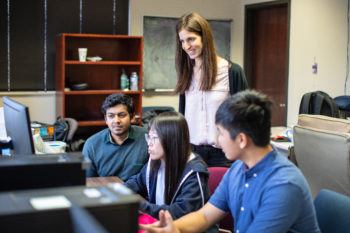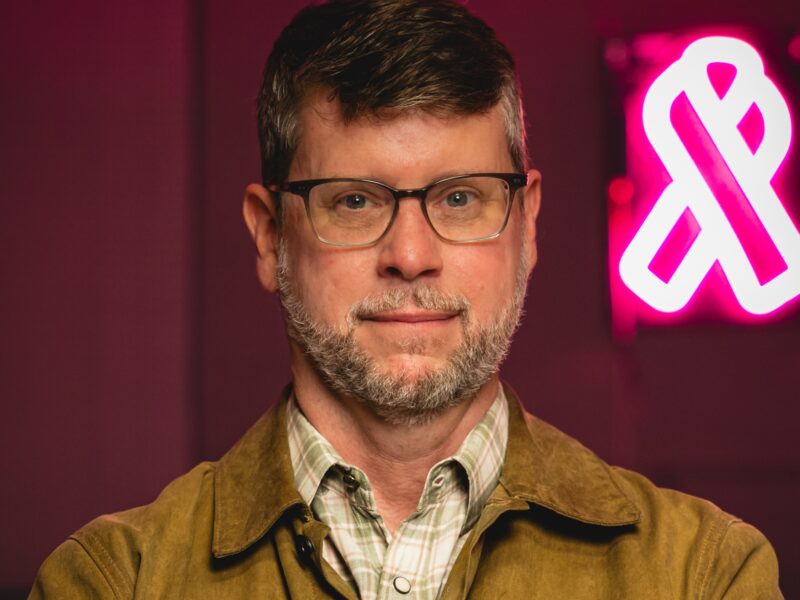Inaugural Innovation [X] Grants Awarded To Interdisciplinary Teams

Texas A&M University’s School of Innovation has awarded $120,000 in grants to six interdisciplinary teams of researchers and faculty that will work alongside students to find solutions to real-world problems.
Through the Innovation [X] Program, the teams’ yearlong projects will tackle a range of societal issues including food insecurity, the effect of pandemics on local economies, heat extremes and disaster resilience. The program – which is in its inaugural year – offers an opportunity for Texas A&M students to engage in projects that translate research into actions that could have an impact on the community, nation and world.
“One of the missions in the School of Innovation is to bring together students and faculty from a variety of disciplines who otherwise wouldn’t have the opportunity to work together,” said School of Innovation Associate Dean Robert Shandley. “We came across this idea for a program that involves at least two faculty members from two disciplines, and would be available to students regardless of their major.”
Similar to programs offered at Stanford University, Duke University and others, Innovation [X] awards grants to projects that bridge disciplines and areas of study and address societal challenges. This month the School of Innovation announced the first Innovation [X] grant recipients:
- Muthukumar Bagavathiannan, College of Agriculture and Life Sciences
- Theodora Chaspari, College of Engineering
- Dustin Kemp, LAUNCH
- Leslie Ruyle, Bush School of Government and Public Service
- Yangyang Xu, College of Geosciences
- Lei Zou, College of Geosciences
Theodora Chaspari, an assistant professor in the Department of Computer Science & Engineering, will lead a team that includes contributors from the Department of Psychological & Brain Sciences, Department of Educational Psychology, Department of Construction Science, Department of Mechanical Engineering and the College of Architecture. Over the next year the team will examine the relationship between neuro-physiological signals and human stress, and how adaptive and responsive environments can affect physical and mental health.
Chaspari said Innovation [X] is a “great fit” that will enable team members from multiple departments to conduct preliminary research that otherwise would be difficult to accomplish.
“Essentially we wanted to find a way to more objectively understand whether a person feels comfortable or whether a person is anxious or stressed or in a negative mood in a given environment,” Chaspari said. “And then the idea was that in collaboration with researchers from these domains, we would be able change the environment adaptively and in a personalized way for each individual.”
Chaspari said the team’s experiments will measure a person’s thermal, acoustic and light-based comfort using indicators like heart rate, facial expressions and speech patterns. The goal is to then develop responsive panels that can be installed in places like cubicles, furniture or portable interior walls that can mitigate stress responses by adjusting factors like temperature and light conditions.
Adaptive living spaces could be helpful in open office spaces used by multiple employees with different preferences, Chaspari said, or for people with neurological or developmental disorders – such as children with autism – who are sensitive to noise.
Shandley said it was important for the selected projects to address “problems in the real world” that would have outcomes beyond publication in academic journals.
“We wanted students at the end of the year say, ‘We did this, or made this, or helped solve this problem,’” Shandley said.
The School of Innovation, or “I-School,” was created in 2017. As a hub for creativity and problem-solving, Dean Andy Morriss said the school’s goal is to give students the opportunity to work on multidisciplinary teams without taking more classes. The School of Innovation doesn’t offer degrees or courses, but rather serves as a platform for collaboration across disciplines.
“Students who are interested in starting businesses and seeing how new technologies can affect the world should have the opportunity in their education to participate in that, and they’re going to leave A&M with real-world experience that will enable them to be way ahead of graduates from other universities,” Morriss said.
Students applications to work on one of the six Innovation [X] programs are open through July 31. More information about the selected programs can be found at the School of Innovation website.
Media contact: Caitlin Clark, 979-458-8412, caitlinclark@tamu.edu.





